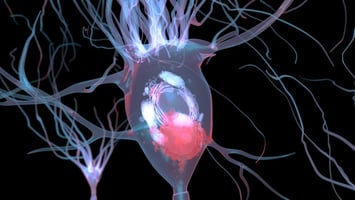Recent years’ increased prescribing of stimulants for attention-deficit/hyperactivity disorder...
Centanafadine May Improve ADHD Symptoms in Adolescents

The investigational drug centanafadine improved symptoms of attention-deficit/hyperactivity disorder (ADHD) in adolescents in a Phase 3 clinical trial. The results of the trial, which was sponsored by Otsuka Pharmaceutical Development & Commercialization, were published in the Journal of the American Academy of Child & Adolescent Psychiatry.
“Neurobiological and pharmacological ADHD research has focused on the roles of norepinephrine and dopamine. However, emerging evidence suggests that serotonin may also contribute to the disorder,” wrote Timothy E. Wilens, M.D., of Harvard Medical School, and colleagues. They noted that serotonin levels have been shown to influence processes related to mood, executive function, sleep, and memory—all of which are linked to core symptoms and associated features of ADHD, such as inattention, impulsivity, deficits in emotional regulation, anxiety, and depression. Centanafadine is a norepinephrine, dopamine, and serotonin reuptake inhibitor.
The researchers (who included investigators from Otsuka) analyzed data from 451 adolescents ages 13 to 17 years who took part the trial. Participants received 164.4 mg or 328.8 mg of centanafadine or placebo once daily for six weeks. The researchers conducted symptom assessments via interviews with a parent/guardian or caregiver of each adolescent (same person throughout the study).
The mean baseline ADHD Rating Scale Version 5 (ADHD-RS-5) total raw score among participants was 37.5. At week six, the mean ADHD-RS-5 total raw score decreased by 15.5, 18.5, and 14.2 points for the centanafadine 164.4-mg, centanafadine 328.8-mg, and placebo groups, respectively. The difference in mean ADHD-RS-5 scores between the centanafadine 328.8 group and placebo at week six was considered statistically significant. The benefits of the 328.8-mg dose over placebo came as early as one week after initiating medication.
Treatment-emergent adverse events occurred in 31.4% of patients in the centanafadine 164.4-mg group, 50.3% in the centanafadine 328.8-mg group, and 23.8% in the placebo group. The most common treatment-emergent adverse events were decreased appetite, nausea, headache, and rash.
For related information, see the Psychiatric Services article “Recent Trends in Medication Treatment for Attention-Deficit Hyperactivity Disorder.”
(Image: Getty Images/iStock/mediaphotos)
Don't miss out! To learn about newly posted articles in Psychiatric News, please sign up here.





